
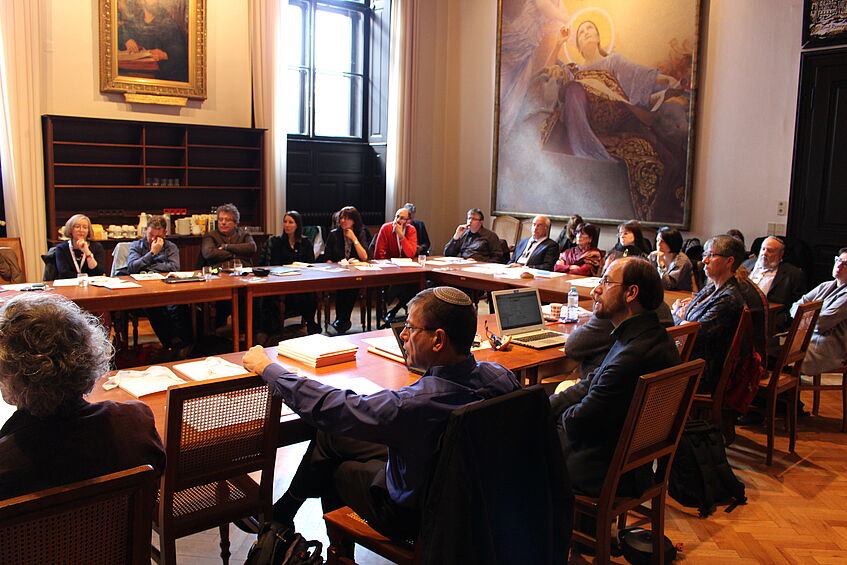
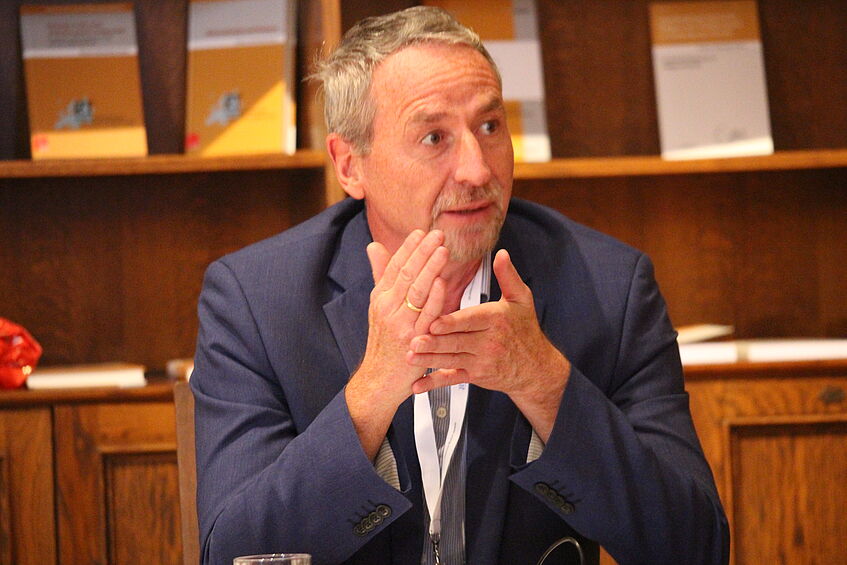
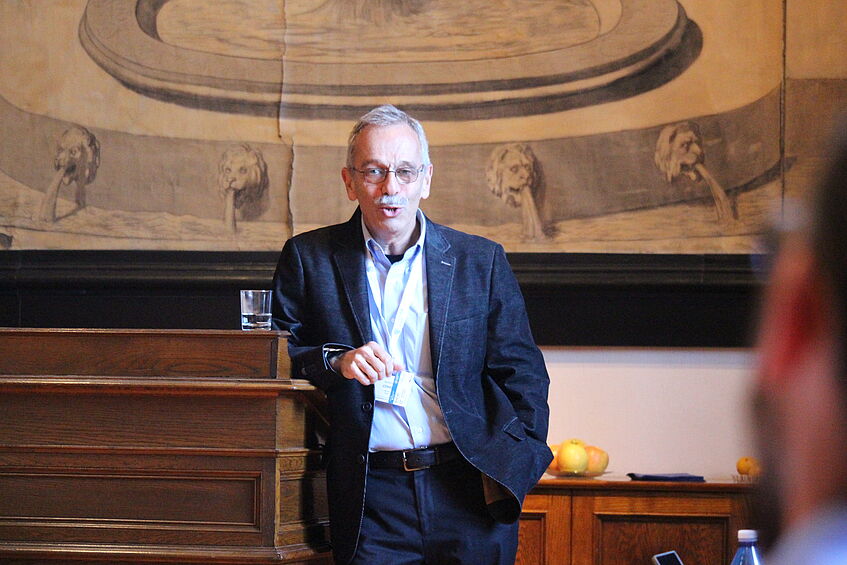
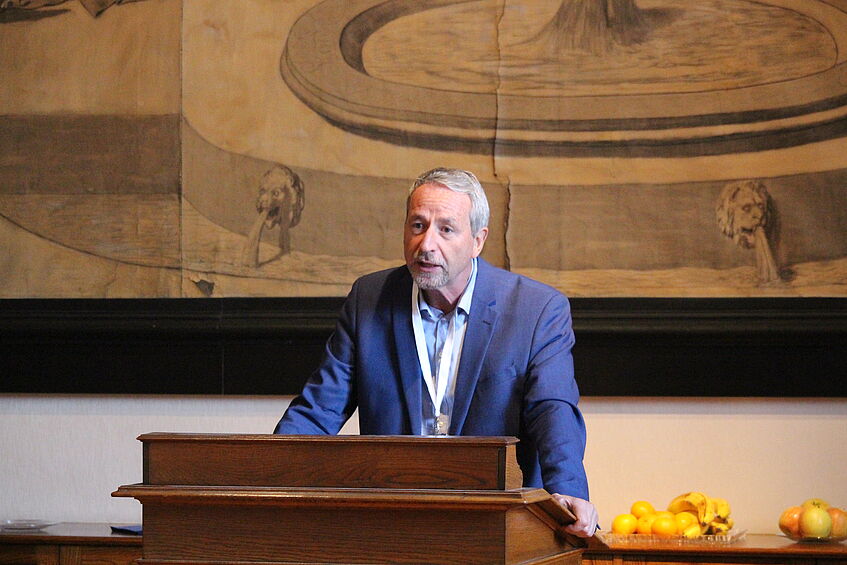
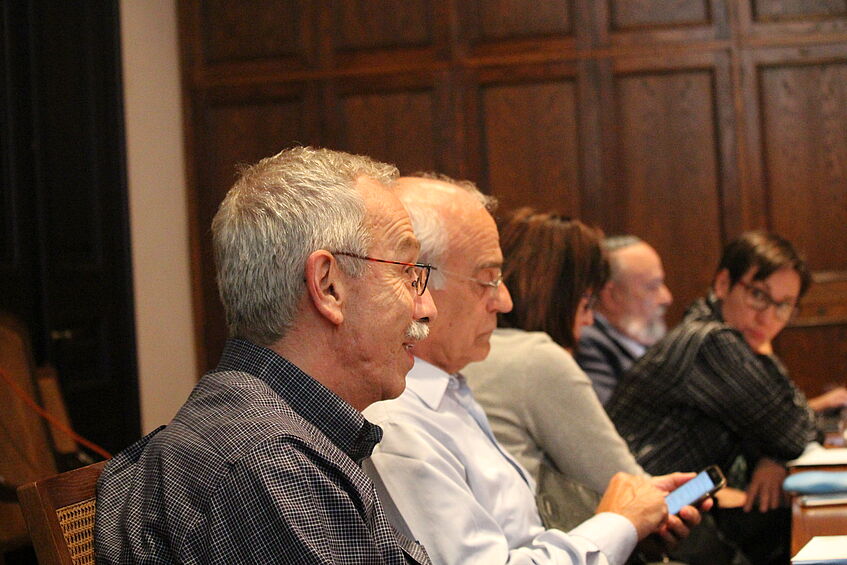
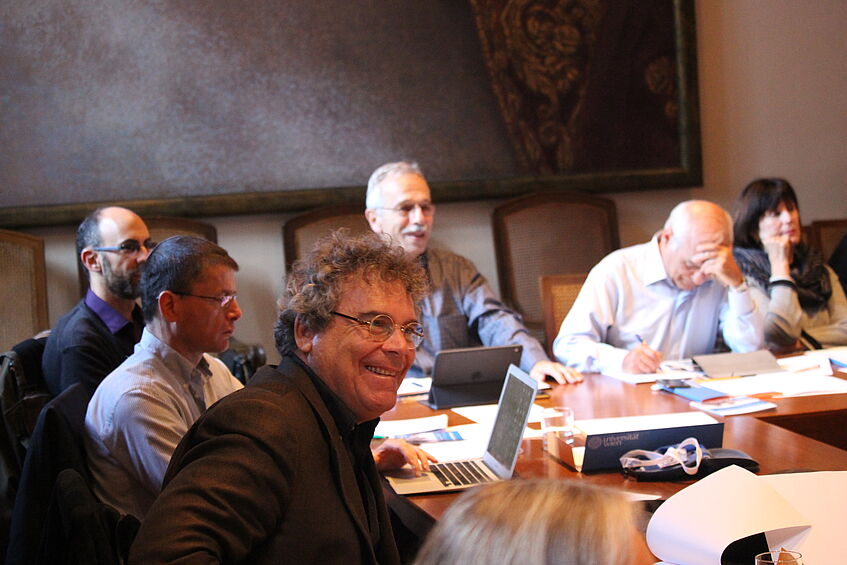
On November 14th and 15th, 2017, a conference on the subject “Can Polemics innovate? Change and Continuity in Jewish-Christian Polemics from Late Antiquity to the Modernity” was held on the premises of the Faculty of Catholic Theology. As was emphasized by Jeremy Cohen at the outset the contributions to the conference dealt with a variety of topics revolving around the history and historiography of the changing Jewish-Christian polemics. Ora Limor presented hermeneutic strategies that were used by both Jews and Christians in order to raise and justify their claim on holy sites. Israel Jacob Yuval examined the moved history of the rest on Shabbat and Sunday as well as the accompanying divergent developments established in the Christian Eastern and Western churches in order to discuss the dealing of the Jews with those intern Christian differentiations and to inquire after comparable developments in Judaism. Philippe Bobichon however, drawing from less known medieval and early modern anti-Christian and Jewish polemic writings, looked into the matter of the possibility of distinguishing between those texts by comparison with anti-Jewish literature and explored the reactions they provoked and to what extent these were Christian anti-Jewish attacks. In contrast Daniel J. Lasker presented writings by the priest Daoud al-Muqammas from the 9th century which, even though those are among the first Jewish-Christian polemics, constitute a Jewish answer to Christian criticism, but are interestingly not at all to be understood as part of the self-reflexion of Jewish theology. Remaining in the same period Alexandra Cuffel studied diverse types of polemics in the area of the Eastern Mediterranean in her ensuing contribution, referring to polemic argumentations, dialogues, chronologies, apocalyptic writings and hagiographic as well as anti-hagiographic narratives. Following this Yaacov Deutsch developed reciprocal motives between continuity and change on the basis of one of the oldest Jewish anti-Christian polemics – Teledot Yeshu. Referring to the first officially documented Jewish-Christian dispute concerning the Talmud (1240), which is supported by countless Hebrew and Latin writings, Ursula Ragacs was intent on conveying an idea of the extent to which Jewish writings were controlled by Christians and of the efforts deployed to obtain outstanding writings.
Subsequently, with his focus on the Sabbatyon legend Daniel Stein-Kokin performed the transition to the 15th and early 16th century which saw changes in synagogue rituals and Jewish identity that were linked to „halakhicization“ and a rise in importance of relics. Referring to Ram Ben-Shalom according to whom there was a mass conversion in 1391 that could be divided into two groups, Charim Hames further discussed the issue of identity – illustrated by the example of a converted Jew who kept living as a Christian in public – and thus pointed out the conflict between exterior and interior faith and its consequences up to the 16th century. Carsten Wilke chose the diaspora of the Huguenots, which developed after the revocation of the Edict of Nantes (1685), as the starting point of his presentation. Notwithstanding the broad review concerning the influence of the intellectual history of early Enlightenment the philosophical aspect of the encounter between Huguenots and Jews and its significance for the Jewish-Christian debate have been neglected for the most part, but were shed light on in this paper on the basis of the writings of the Portuguese Jew Abraham Gómez Silveyra (1656-1741).
It is said that a paradigm shift occurred in the religious domain in the 17th and early 18th century which was portrayed by Christiana Facchini following the writings of Leon Modena’s Magen ve-herev and which showed how polemic writings lead to innovations. Károly Dániel Dobos referred to relatively unknown polemic Jewish texts from early modern Italy which he compared with medieval writings. This way he pointed out how those writings were subject to radical changes as to their function: by being theoretically considered literary texts, which distinguished them from more ancient Jewish anti-Christian polemics, they were also considered parodies within the polemic field which turned them into a new textual category. Subsequently, Ram Ben-Shalom discussed to what extent the writings of the tradesman Eleazar Shalom from Poland (around 1800) helped clear up a new chapter of Jewish-Christian polemics. Finally, Maria Diemling linked these substantial historic and historiographic enquiries to current debates by asking how the complexity of the Jewish-Christian relations could by transmitted to students in an adequate and multifaceted way.
